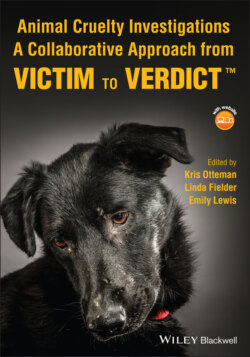Читать книгу Animal Cruelty Investigations - Группа авторов - Страница 165
5.6 Suspect Interviews
ОглавлениеThe importance of setting the subject at ease, establishing rapport, and building trust is no less important when the subject is the investigation's suspect than when they are a witness. While the ultimate goal of the suspect interview might be to obtain a confession, this should not be the driving motivation when structuring the interview. There may also be times when an investigator is faced with interviewing a suspect in a case in which it is seemingly obvious, due to the other evidence at hand, that the individual most certainly committed the crime, but this decision may only be made by the courts and the duty of the investigator to interview the suspect with integrity and impartiality remains unchanged.
After you have introduced yourself, established rapport, informed the suspect of their rights, and explained why they are being interviewed and what to expect, it is time to allow the suspect to provide you with their account of the incident at question. Begin by posing an invitation to tell their story and allow them time to collect their thoughts. Try not to interrupt or ask clarifying questions during the suspect's narrative, allow them to pause to gather their thoughts as needed, and resist the urge to fill their silence with questions. As the suspect offers you their story, you will most likely identify pieces you will want to examine more closely. Once the suspect has said their piece with minimal interruptions, it is time for you to pose clarifying questions, introduce evidence or elements of the investigation that the suspect may have left out of their account, and address any blatant misinformation. Even when digging deeper and posing questions that may cause discomfort for the suspect, remember to ask questions in an open‐ended way and treat the suspect with respect. Your job is to probe and challenge the suspect's account, as needed, while striving for accuracy and truthfulness.
In cases with multiple suspects, interview each suspect separately, if possible, and clarify any “we” statements made during the interview. It is important to document each suspect's individual culpability for the violation you are investigating. Ask direct questions about their participation in the incident or role in the care of the animal. If a suspect continues to use “we” statements in discussing the circumstances leading to the alleged violation, try to narrow your questions in order to get a statement that does not involve other suspects. For example, if an emaciated dog is discovered in the care of three brothers who live together and one of the brothers responds to your questioning, “We all were in charge of buying the dog food.” You should then ask clarifying questions like, “When was the last time you bought the food?” or “When was the last time you fed the dog?” Ensuring that you have statements specific to each suspect's involvement in the situation is crucial for prosecutors in a case with co‐defendants.
